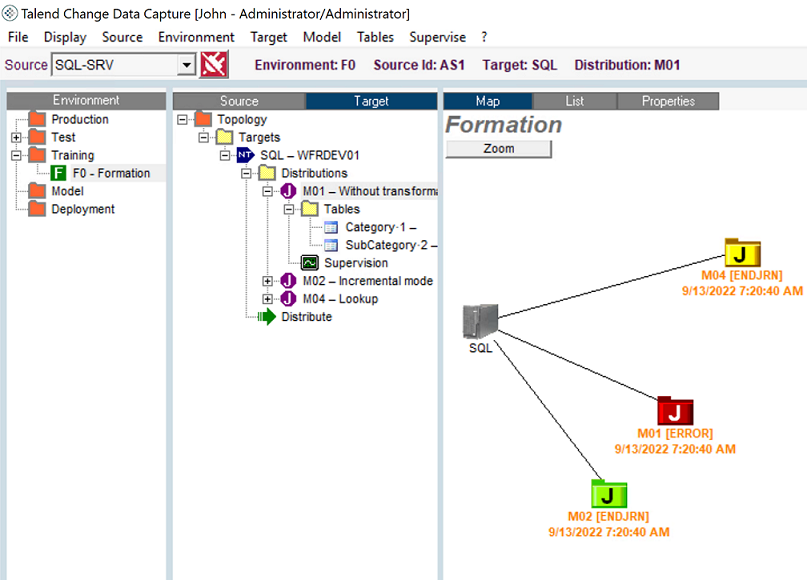Supervision of the replication
This section deals with the tools and means offered by Talend Change Data Capture for both passive and active supervision.
The activity information contained in the Manager is refreshed periodically. You can change the refresh frequency using the Refresh time delay option in the Supervise main menu:

Activity
The current activity is shown in several forms in the Manager.
Topology

The topology represents the status of all the distributions for the selected environment. The distribution is shown with a color code, depending on whether it is running (green), stopped with errors (red), or stopped (yellow).
The first line under the distribution icon specifies its name and its exact status:
- ENDJRN: Waiting at the end of journalization of a transaction record
- STOP: Stopped
- RUN: Replicating
- ERROR: With errors
- INIT: Initializing
The second line specifies the date and time of the last journal sequence. This line is shown in bold orange characters if the date and time exceeds one hour as compared to the date and time of the sequence being processed currently by the Manager.
Supervisor module and DD_SPV table
Use the Jobs status option from the
Supervise main menu to display the supervision window,
which shows the precise and complete status of all the distributions for all the
environments, either for the current source, or for all connected sources (see Connecting to a source). By default,
the status of the current source is displayed. 
To change the display from one source to All sources, click the Current source field located on the bottom-left corner of the window. This field now indicates All sources.

The content of the window is retrieved from the DD_USRDATA..DD_SPV table of each source server. This table is updated frequently (30 sec.) by the TalendCDC SQLServer Supervisor NT service program or the DDSPV AS/400 IBMi batch job which must be initiated. You can then use the content of this table through a warning tool.
Did this page help you?
If you find any issues with this page or its content – a typo, a missing step, or a technical error – let us know how we can improve!
